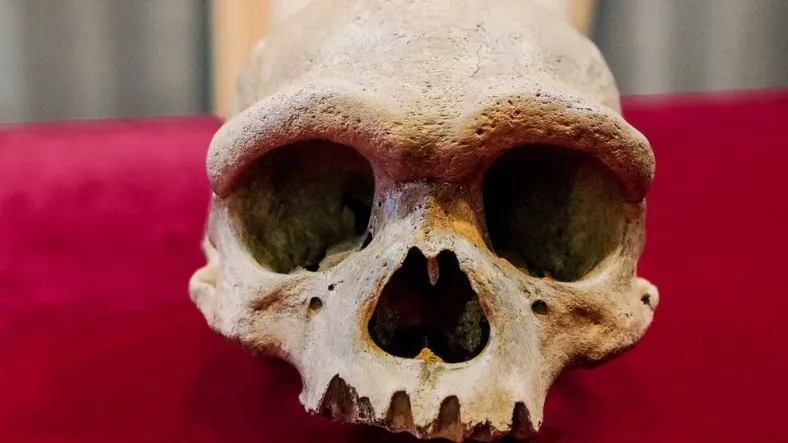Scientists reconstruct the face of “Dragon Man”
- December 1, 2023
- 0
About 150,000 years ago, a huge, thick-headed man known as Homo longi (or “Dragon Man”) roamed the icy forests of northern China. Despite its odd size, an ancient
About 150,000 years ago, a huge, thick-headed man known as Homo longi (or “Dragon Man”) roamed the icy forests of northern China. Despite its odd size, an ancient

About 150,000 years ago, a huge, thick-headed man known as Homo longi (or “Dragon Man”) roamed the icy forests of northern China. Despite its odd size, an ancient hominid was recently identified as a sister lineage to Homo sapiens, and a new reconstruction of the extinct human’s face shows what it might have looked like. A study detailing facial reconstruction was published on the website Ortog Online.
Named after the Heilong Jiang River (meaning “Black Dragon River”) in China’s Harbin Province, Homo longi first entered the archaeological record in 1933, when construction workers discovered a well-preserved skull during the construction of a bridge. However, it was only in 2021 that researchers realized that the skull belonged to a previously unknown species.

Dated to at least 146,000 years ago, the skull’s owner lived in East Asia at a time when modern humans were interacting with many of our close evolutionary relatives, including Neanderthals and Denisovans. Described as “enormously large” and possessing a number of unique facial features, including square eye sockets, flat and low cheekbones, and enormous teeth, Homo longi may at first glance appear to be a somewhat distant relative of its three contemporaries.
But researchers believe Dragon Man may be even more closely related to modern humans than our famous Neanderthal brothers. However, until today we have not been able to properly look at the face of this chunky brother of ours.
Brazilian expert Cicero Moraes (whose other facial reconstructions include Hobbit humans and ancient Egyptian pharaohs) created a digital model of the skull using data and images provided by the authors of the 2021 study to visualize the ancient hominid’s likeness. The complete skull of another ancient human, Homo erectus, was later used to fill in the missing jaw fragments and some teeth of Homo longi.

Moraes added soft tissue markers by taking CT scans of modern humans and chimpanzees and distorting them to fit the contours of Homo longi’s skull. As a result, an “anatomically consistent” digital bust was created in shades of gray based on objective data and reliable modeling methods.
However, as the resulting images were intended to be made available to the general public, Moraes allowed himself to take an “artistic approach” by adding hair and color to the model, thus bringing out the more “bright aspects” of the Dragon Man’s appearance.

Based on the final model, Moraes calculated that Homo longi’s head circumference was 65.1 centimeters. This measurement gives Dragon Man the honor of having the largest head of any known hominid, putting the bones of an extinct human on par with gorillas and lions.
The species’ enormous size may reflect its adaptation to Harbin’s freezing temperatures, which reached minus 16 degrees Celsius this winter, according to experts who analyzed the skull several years ago. Source
Source: Port Altele
As an experienced journalist and author, Mary has been reporting on the latest news and trends for over 5 years. With a passion for uncovering the stories behind the headlines, Mary has earned a reputation as a trusted voice in the world of journalism. Her writing style is insightful, engaging and thought-provoking, as she takes a deep dive into the most pressing issues of our time.